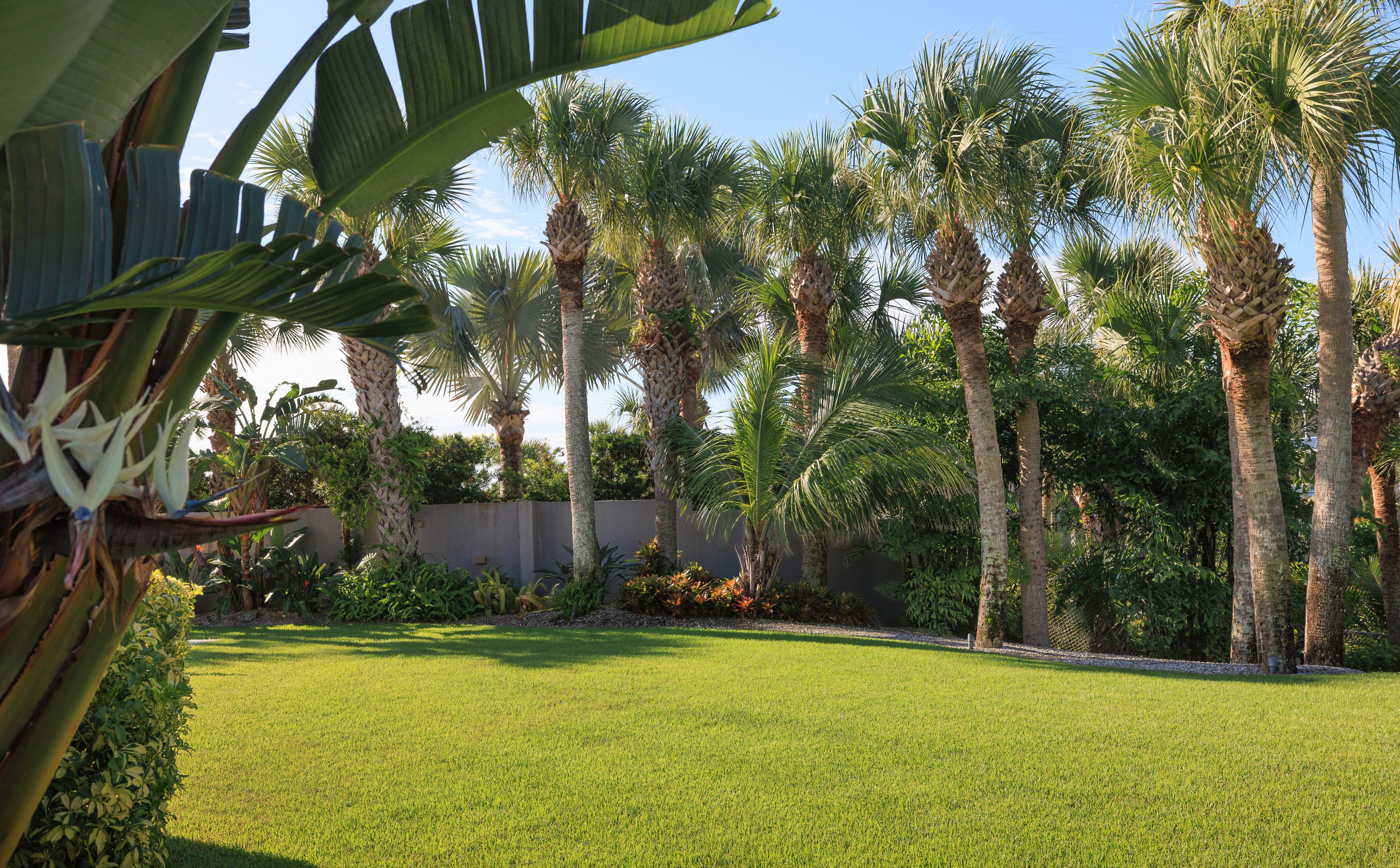Florida may not see frost or snow, but coastal lawns still experience seasonal changes that can affect their health and appearance. As humidity drops, temperatures cool, and daylight shortens, your lawn’s growth slows, and the way you care for it should slow down too.
Transitioning into the cooler months is not about heavy work. It is about giving your lawn what it needs to stay balanced, resilient, and ready to thrive when spring returns.
Understanding Seasonal Shifts in Coastal Lawns
Even in Florida’s mild winters, your turfgrass naturally enters a lighter growth phase. Shorter days mean less photosynthesis, so lawns store energy instead of producing new blades. Combined with drier air and occasional salty winds, the soil can quickly lose moisture while surface growth becomes more fragile.
Recognizing this slower rhythm helps you adjust your care routine and keep your lawn healthy instead of pushing it when it is resting.
Watering Wisely in the Cooler Months
One of the biggest mistakes homeowners make in winter is watering on a summer schedule. Overwatering at this time of year not only wastes water but also encourages shallow root systems and fungal growth.
Instead, aim for deeper, less frequent watering. Allow the top layer of soil to dry slightly before the next irrigation. This helps roots reach farther into the soil, where moisture and nutrients are more stable. In coastal areas where salt levels can rise, deeper roots also help grass resist salt stress and dehydration.
If your lawn’s surface starts feeling compacted, aeration can improve absorption and help fresh water move evenly through the soil.
Nourishing the Soil, Not the Blades
Cooler months are the time to focus on soil health rather than rapid growth. High-nitrogen fertilizers designed for summer can actually stress grass now, forcing new growth that is too tender for cooler temperatures.
Instead, choose a slow-release or organic fertilizer with a balanced nutrient profile. This replenishes the soil’s reserves without overstimulating the grass. Compost and natural amendments also help strengthen the soil structure, improving drainage in sandy coastal areas while keeping roots protected and hydrated.
Healthy soil acts like insulation. It stores nutrients and moisture, helping your lawn recover faster in spring.
Managing Weeds and Pests Before They Take Hold
Winter may slow your grass, but many weeds thrive in cooler weather. Early prevention makes a big difference. Applying a pre-emergent herbicide or natural weed barrier now keeps unwanted growth from competing for nutrients later.
Coastal lawns also face unique pest pressures. Mole crickets and chinch bugs can stay active long after temperatures cool, and their tunneling can disrupt already slowed root systems. Monitoring early and treating small patches prevents widespread damage by spring.
Protecting Against Wind and Salt Stress
Even when storms are mild, salt-carrying winds can dry out grass and leave a thin layer of residue across your lawn. A quick rinse with fresh water after windy days helps wash away that buildup.
Mulching the perimeter of your lawn, especially near exposed edges, helps retain soil moisture and adds organic protection against evaporation. Native shrubs or ornamental grasses planted along coastal-facing edges can also act as natural windbreaks, reducing salt drift before it reaches your turf.
Preparing for a Strong Spring Comeback
When winter care is balanced, spring does not require recovery. It becomes a smooth transition back to growth. Healthy roots, nourished soil, and managed moisture levels all set the stage for a lawn that greens up quickly when temperatures rise again. Yourlawn’s appearance may soften during cooler months, but underneath the surface, it is storing energy for the next season. The goal is to support that quiet process, not interrupt it.
Coastal Landscapes offers year-round maintenance services tailored to the unique challenges of Florida’s coastal environment. From spring prep to winter cleanups, our team protects your property and keeps it looking beautiful in every season. Partner with us to ensure your landscape remains resilient and ready for the next sea breeze.
